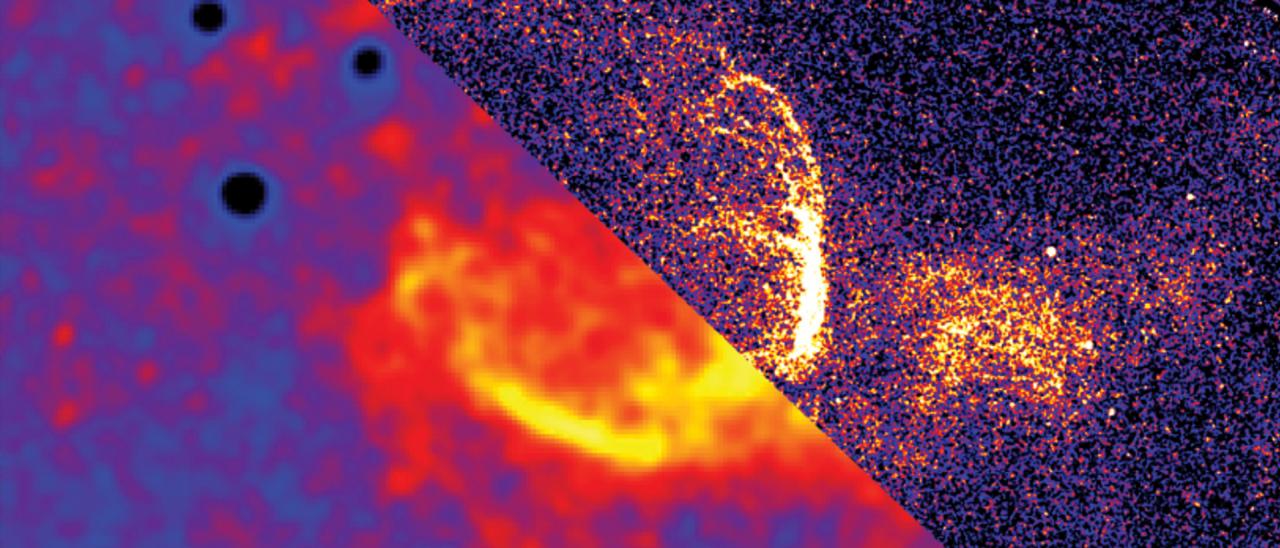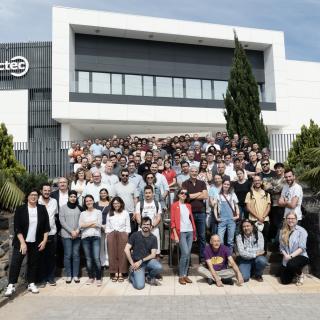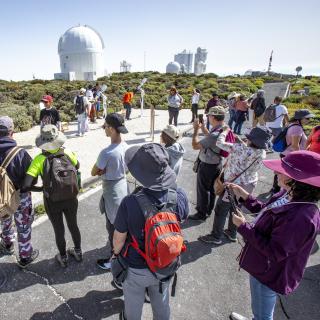Observations with the Liverpool Telescope and Hubble Space Telescope, supported by spectroscopy from the Gran Telescopio Canarias (GTC) and the Hobby–Eberly Telescope (some of the largest astronomy facilities on Earth), discovered this enormous shell-like nebula surrounding ‘M31N 2008–12a’, a recurrent nova located in our neighbouring Andromeda Galaxy. At almost 400 light years across ––and still growing, this shell is far bigger than a typical nova remnant (usually around a light year in size) and even larger than most supernova remnants.
Lead author Dr Matt Darnley, Reader in Time Domain Astrophysics at Liverpool John Moores University’s (LJMU) Astrophysics Research Institute explains: “Each year ‘12a’ (as we lovingly refer to it) undergoes a thermonuclear eruption on the surface of its white dwarf. These are essentially hydrogen bombs, which eject material equivalent to about the mass of the Moon in all directions at a few 1000 kilometres per second. These ejecta act like a snow plough, piling the surrounding interstellar medium up to form the shell we observe ––the outer ‘skin’ of the bubble, or the ‘super-remnant’ as we have named it.”
These new observations coupled with state-of-the-art hydrodynamic simulations (carried out at LJMU and the University of Manchester) have revealed that this vast shell is in fact the remains of not just one nova eruption but possibly millions ––all from the same system.
Despite its uniqueness and staggering scale, the discovery of this super-remnant may have further significance. Dr Matt Darnley continued: “Studying 12a and its super-remnant could help us to understand how some white dwarfs grow to their critical upper mass and how they actually explode once they get there as a ‘type Ia supernova’. Type Ia supernovae are critical tools used to work out how the universe expands and grows.”
Dr Rebekah Hounsell, second author of this study and a post-doctoral researcher at the University of Pennsylvania, was at the Space Telescope Science Institute when she took part in the research. She explains: “Type Ia supernovae are some of the largest explosions in the Universe and our most mature cosmological probes. The recurrent novae M31N 2008–12a is the most likely type Ia supernova progenitor to date and provides us with the unique opportunity to study such a system before its final demise. Lying within our nearest galactic spiral neighbour, Andromeda, the explosion of 12a would be one of the closest supernovae observed by telescopes. The last observed supernova within our own galaxy occurred in 1604.”
“In a previous work we predicted that 12a will ultimately explode as a type Ia supernova in less than 20,000 years ––a very short time in cosmological terms. But, in the meantime, we will continue to monitor the next nova eruptions of this system”, explains Dr Pablo Rodríguez-Gil, co-author of the paper, researcher at the IAC, and associate professor at the ULL. “A missing piece of the puzzle is the nature of the companion star that provides the material to the white dwarf. It is extremely faint, but its detection is within the reach of the largest telescopes, such as GTC. This is a crucial next step toward our understanding and ultimate fate of this recurrent nova”.
Reference: M. J. Darnley et al. "A recurrent nova super-remnant in the Andromeda galaxy". Nature. DOI: 10.1038/s41586-018-0825-4
Contact at IAC: Pablo Rodríguez-Gil: prguez [at] iac.es (prguez[at]iac[dot]es)



